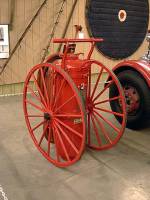
Fire extinguishers are essential safety devices that help prevent small fires from turning into devastating disasters. They work by cutting off the fire’s fuel, oxygen, or heat source, depending on the type of extinguisher. Understanding the different classes of fire and the extinguishers designed to combat them is crucial for ensuring safety in various environments. The primary classifications include Class A (wood, paper, and cloth fires), Class B (flammable liquids like gasoline), Class C (electrical fires), Class D (metal fires), and Class K (cooking oil fires in kitchens).
for households
For households it’s recommended to have at least a multi-purpose ABC extinguisher. These cover common domestic fire hazards, such as paper and fabric (Class A), grease and oils (Class B), and electrical fires (Class C). Kitchens, where cooking-related fires are prevalent, may also require a Class K extinguisher specifically designed for grease fires. It is best to ensure extinguishers are placed near potential fire sources like stoves and fireplaces. They also need to remain readily accessible in an emergency to make all the difference.
In farm settings
In farms, fire risks vary widely, from barn fires caused by hay combustion to machinery malfunctions igniting oil or fuel. Large farms should have Class A extinguishers for combustible materials like hay and straw. Class B extinguishers for fuel-related fires, and Class C for electrical issues. Due to the presence of welding equipment and metal work, a Class D extinguisher may also be necessary in some cases. Given the scale of fire risks in farm settings, larger capacity extinguishers or a well-planned fire suppression strategy should be in place.
In garages
Car garages present unique fire hazards due to the storage of flammable liquids like oil and gasoline. Class B extinguishers are a must for most liquid fires. In addition, garages often house electrical tools and wiring which makes a Class C extinguisher equally important.
Ensuring proper selection, placement, and understanding of fire extinguishers can significantly reduce fire-related risks in homes, farms, and garages. Regular checks and training on their use can be lifesaving in critical moments.